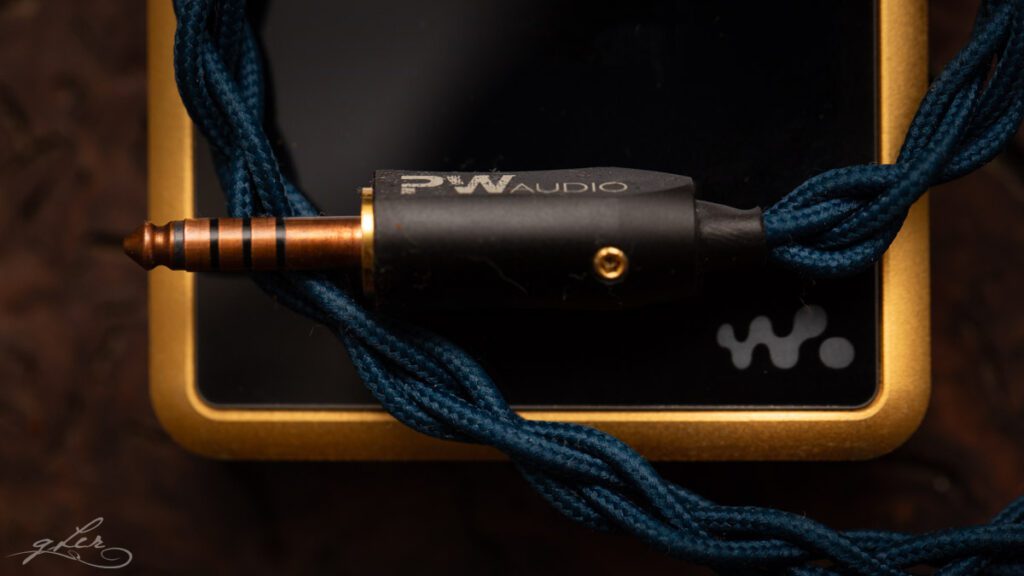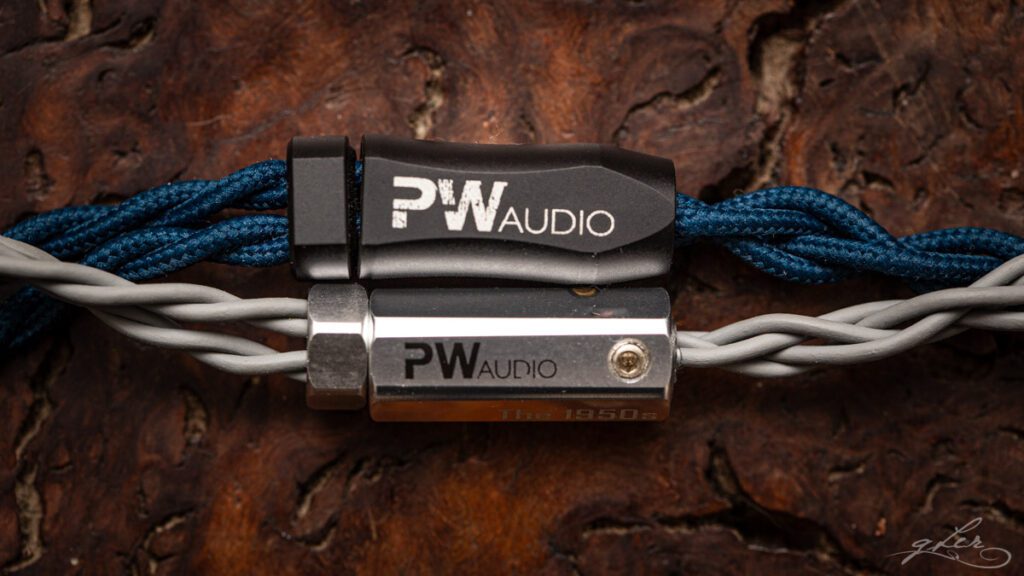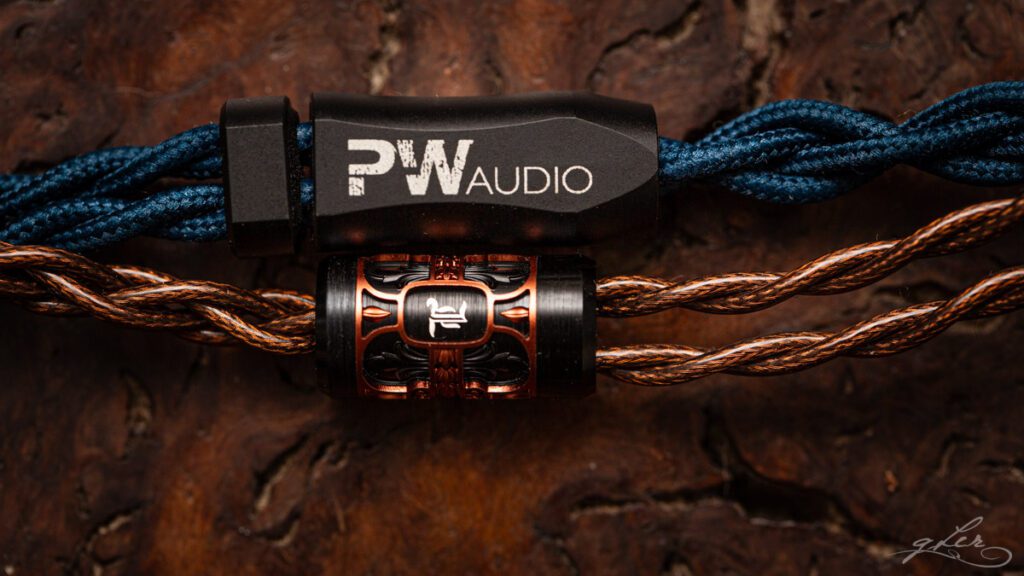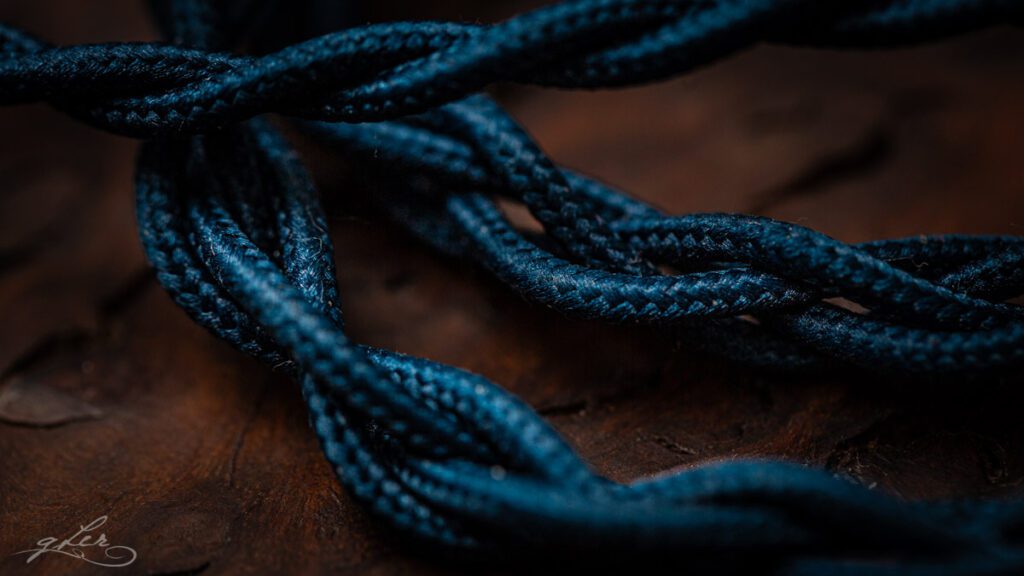Sound impressions
I tested The 1960s Mk II using a wide range of tracks across different genres, with different IEMs and different sources, though the main notes were taken using FIR Audio’s Rn6 (reviewed here) and HiBy’s RS8 (reviewed here). Since cables don’t have an actual ‘sound’, my notes were more about the changes I heard in the tone and technicalities of each IEM relative to a baseline.
Here’s a headline for you: The 1960s Mk II reminds me of a baby Orpheus. I hear the same smooth, lush tonality from the very first note, with transients rounded off and polished without ever being dulled. This combination of tonal richness while retaining – and even improving – the sense of detail and space is a special trait I’ve heard with very few cables before, the most notable of which is Orpheus.
Now before you get carried away, I will say The 1960s Mk II isn’t quite as domineering as Orpheus can be on the sound of an IEM. Unlike Orpheus, which imprints itself so deeply in the sound profile that it’s sometimes difficult to tell where the IEM ends and the cable begins, The 1960s Mk II works in a slightly more subtle way, although the changes are still more notable to me than other high-end cables I’ve recently reviewed like Eletech’s Ode to Laura and Sonnet of Adam.

Bass notes are definitely elevated, but don’t hit with added force or sharpness. Instead, they’re given a more bodied presentation, with bigger weight down low, and a naturally smooth decay. There’s warmth here for sure, but nowhere nearly as much as Orpheus imbues; nor does the bass hit quite as hard or tight as The 1950s.
That’s also likely a result of the same soothing effect The 1960s Mk II has on treble notes, which are shorn of any harshness without losing as much extension and bite as they do with Orpheus. There’s a lightness to the treble notes that’s almost EST-like, not nearly as sharp or prominent as you’d get from First Times Shielding, for instance, and therefore not nearly as bright.
Midrange notes are where the magic of this cable really manifests, for me. This is one of the few cables I’ve heard that can properly quell upper midrange shout without sacrificing detail or nuance. No, it may not present quite as ‘clear’ as the clarity-focused sound of The 1950s, but the mix of euphonic warmth and detail in the vocal midrange is about as Orpheus as I’ve heard without Orpheus.
Overall, the tonality changes I’m hearing give me the impression of a soft-focus filter that masks out any harshness or grit in the sound, but is then delicately feathered away to reveal all the nuance and detail in the original sound. As such, I instantly feel like the music has been relaxed slightly, but is no less hi-fi, if that makes sense.

If you’re starting to think this is all pointing to a sedate, lifeless cable, think again. Some of the fairy dust and unicorn hair Peter Wong uses to make Orpheus must certainly have found its way into The 1960s Mk II, because technically this cable is a stellar performer. No, it’s not quite Orpheus-level tech – you’re not getting the world’s biggest-staging cable with peerless resolution. This is a baby version of that, which means you’re still getting generous stage expansion, and enough resolution headroom that’s not going to limit even the most resolving IEM.
This technical feat is more than likely the result of the ultra-dark background, again not quite Orpheus black-hole level, but not dissimilar. Notes clearly emanate from a deeper, darker space, and have more of that space between them, even compared to an already-dark cable like The 1950s. Whatever twisty manipulation and shielding foil was used to make this cable, it’s working.
Select comparisons
PW Audio The 1950s ($2,150). I have a confession to make: The 1950s is my ‘dream’ cable, the one I lusted after from my earliest days in the hobby, and the one that repaid that lust once I finally got to hear it. For me, it’s the quintessential pinnacle of copper cable design, enhancing the weight and power of the lowrange while delivering ultra-clarity and excellent extension from midrange to treble. It’s a revealing cable, and as such can also be unforgiving, and is more neutral and transparent than the lusher, more coloured Orpheus derivatives.

The 1960s Mk II, like Orpheus, colours the sound more audibly, tilting it smoother and slightly warmer, but not necessarily darker like Orpheus. In fact, I’d probably place The 1960s Mk II and The 1950s on the same brightness scale overall, with The 1950s being more incisive and excitable, and The 1960s Mk II more relaxed and a touch more refined.
Any harshness that slips through with The 1950, especially in the upper mids, is filtered out by The 1960s Mk II, but not at the expense of detail. Staging is also larger with The 1960s Mk II, in width, depth and height, but that makes smaller details potentially more diffuse, even though they’re still there.
I can definitely hear the same pure coppery familial traits in both cables, but sonically they’re more complementary than competitive. If you’re looking for a neutral cable that magnifies the livelier aspects of your IEM while refining quality and boosting technicalities, The 1950s is ideal. For IEMs that need some taming, or for a smoother warm-neutral presentation of already-refined IEMs while adding top-tier resolution, staging and all-round performance, give The 1960s Mk II a go.
Eletech Ode to Laura ($2,799, reviewed here). I thought about comparing The 1960s with Eletech’s other co-flagship, Sonnet of Adam (reviewed here), given the two share quite a few technical similarities. But Ode to Laura, Eletech’s homage to flagship copper, is a more like-for-like comparison and one more likely to come into consideration when shopping at this price tier.

That said, there’s not too many similarities to speak of other than the base material (and Laura is made from a blend of three different coppers). Tonally, Eric Chong took a different approach with his copper showcase cable, opting for a more subtle touch and end-to-end transparency and extension over the bolder colouration and more audible transformation favoured by Peter Wong with the likes of Orpheus, FTS and now The 1960s Mk II.
For example, where Laura tightens the bass notes and enhances texture perception without adding significant weight, The 1960s Mk II emboldens the bass, adding weight and decay while leaving texture intact, even a touch smoother. Laura is likewise more transparent in the midrange and treble, opting for clarity and improved microdetails, where The 1960s Mk II doesn’t bring vocals forward and indeed softens the peaks in the presence region while maintaining similar resolving prowess. Laura also adds sparkle and bite to the treble notes, in a refined way of course, whereas The 1960s Mk II tends to give treble a lighter touch.
Technically, I hear The 1960s Mk II to have a wider, taller stage, while Laura manages to add more depth but doesn’t sound quite as grand. I also think The 1960s Mk II presents with a darker background, and even though Laura is no slouch, I do think the higher-end PW Audio cables have a slight advantage in this metric at least.

This is again a complementary rather than competitive set of cables, the choice of which will ultimately come down to preference and, more importantly, synergy with your IEMs. Both have top-tier performance befitting their enormous price tags, and while Laura is slightly more expensive, I think its superior build quality, microphonic-free ergonomics, and gallery-level industrial design and presentation is easily worth the difference.
Footnote: I think a very interesting and more like-for-like comparison would be between The 1960s Mk II and the new Shielding version of The 1950s, which I’ve also seen being described as a baby Orpheus. If I get the chance to try out this cable, I’ll be sure to update this review with my notes.
Continue to select pairings…



